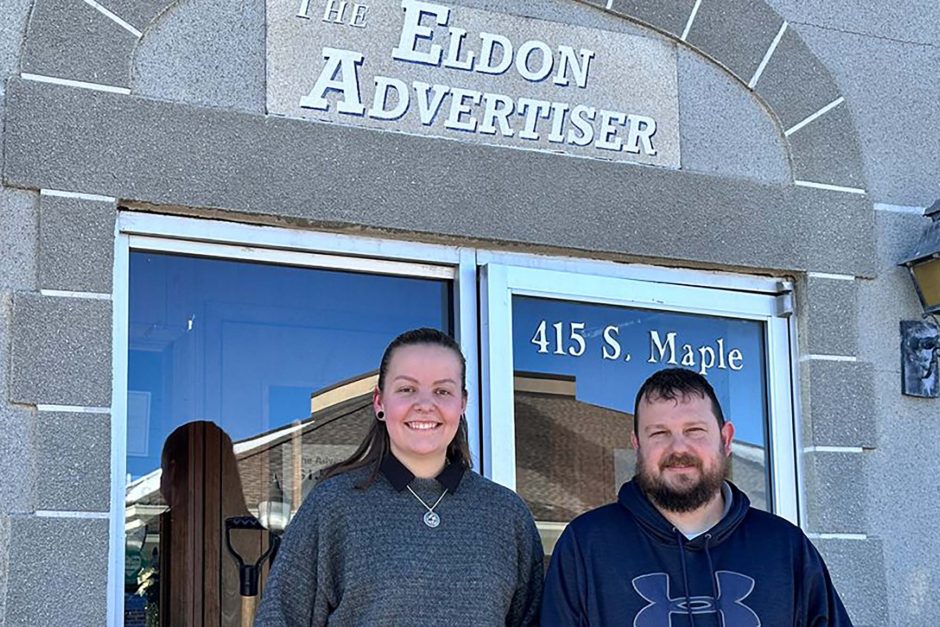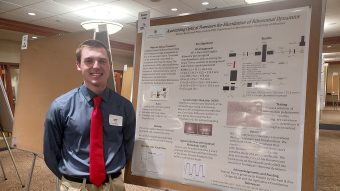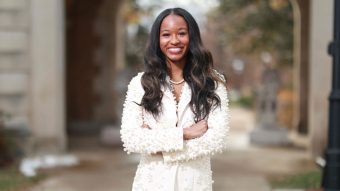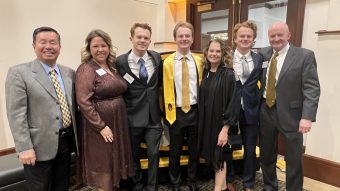
Feb. 28, 2025
Students from the University of Missouri School of Journalism were recently embedded in newsrooms across Missouri as part of the Reynolds Journalism Institute’s Potter Digital Ambassadors program.
The student ambassadors helped 10 news organizations strengthen their audience engagement efforts by developing and monetizing newsletters, refining social media strategies and training staff on a variety of helpful tools. In a first for the program, the ambassadors assisted not only newspapers but also broadcast news organizations, broadening the scope of the program funded by Walt Potter, MA ’81, through the Walter B. Potter Fund for Innovation in Journalism.
“This program has been extremely successful for Missouri Press newspapers, and it was exciting to bring it to broadcast outlets,” said Elizabeth Stephens, program coordinator and Missouri Community Newspaper Management Chair at the School of Journalism. “We learned more about the needs of broadcast news outlets while applying the same approach of meeting newsrooms where they are and helping them move forward digitally in a sustainable way.”
MissouriNet, a division of the Learfield radio network, asked senior Elise Newman to help the state news outlet reach a younger audience that is typically less likely to listen to radio.
“We need to let the people on Instagram and Facebook know who we are and that we’re really good at what we do,” Ashley Byrd, director of news services at Learfield, said. “Social media is a bigger beast than it’s ever been, so this is one of the best ways to reach the Gen Z’s and broaden our audience.”
Newman helped the newsroom take advantage of some of Instagram’s more advanced features, especially when turning video footage into social media-optimized reels, and she introduced strategies to improve MissouriNet’s social reach more broadly. But the experience wasn’t one-sided; for every insight she brought to the table, she also absorbed the kind of knowledge and experience that can only come from hands-on immersion in a newsroom.
“I’ve been able to do such cool things, like attending the governor’s inauguration and helping interview two senators,” Newman said. “I’ve also learned a lot more about my own video editing skills and how to transform videos into more of a social media style.”
Byrd added that student journalists’ eagerness to learn as much as they teach is part of the appeal of participating in the Potter Ambassador’s program.
“We’ve been out of college a little while,” Byrd said. “We need to know the latest and greatest, and the only way to do that is to engage students, to engage people who are learning.”
Byrd is far from the only news professional who embraces the student perspective. Trevor Vernon, publisher of six newspapers serving small communities in mid-Missouri under the Vernon Publishing umbrella, has participated in the program three times and has learned to embrace the ambassadors’ tendency to — in his words — “push the envelope.”
“I used to fight back a little bit, but I don’t fight back anymore,” said Vernon, who is also the mayor of Eldon, Missouri, home of The Advertiser. “I’m just like, ‘let’s try it, let’s see what happens.’ It’s been fun.”
He said junior Genevieve Smith has supercharged his newspapers’ ability to reach readers with newsletters.
“If I tried to do what she did in one day, it would take me three months because I would get pulled in a thousand different directions,” Vernon added. “She’s moved us ahead light years from where we would have been.”
For the Lake Sun in Osage Beach, Smith was able to import email addresses that the paper had previously collected from community members but had not used, bringing its newsletter from 300 subscribers to nearly 3,000.
While the newsletter had maintained a stellar 55% open rate with its smaller audience, Smith and Vernon were prepared for that percentage to dip given the influx of new subscribers. Instead, the open rate remained at 55%, not only demonstrating the paper’s connection to its community but giving Vernon a highly read product that is more likely to attract advertisers.
For another newsletter from The Advertiser, Smith’s approach was all about embracing a small-town perspective.
“I really tried to lean into the more personal, community aspect of it — Eldon is in general very small, very close knit, a care-about-your-neighbors vibe,” Smith said. “Before, the newsletter was just kind of a stack of headlines, so I wanted to add a voice. Now we have one of the general assignment reporters actually writing a column in the newsletter. It still links to all the headlines, but it’s like, ‘here’s what’s happening in town, and here’s why you should care.’”
Read more from the Missouri School of Journalism


